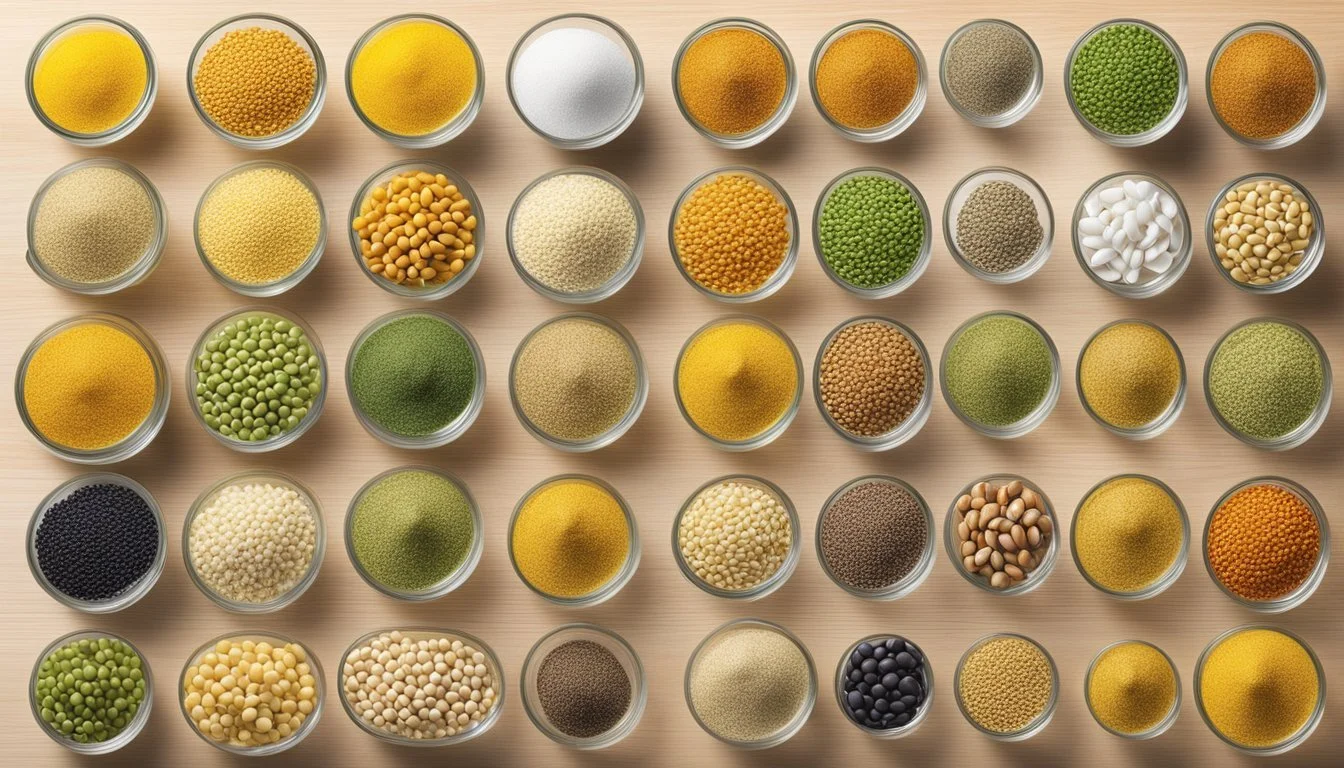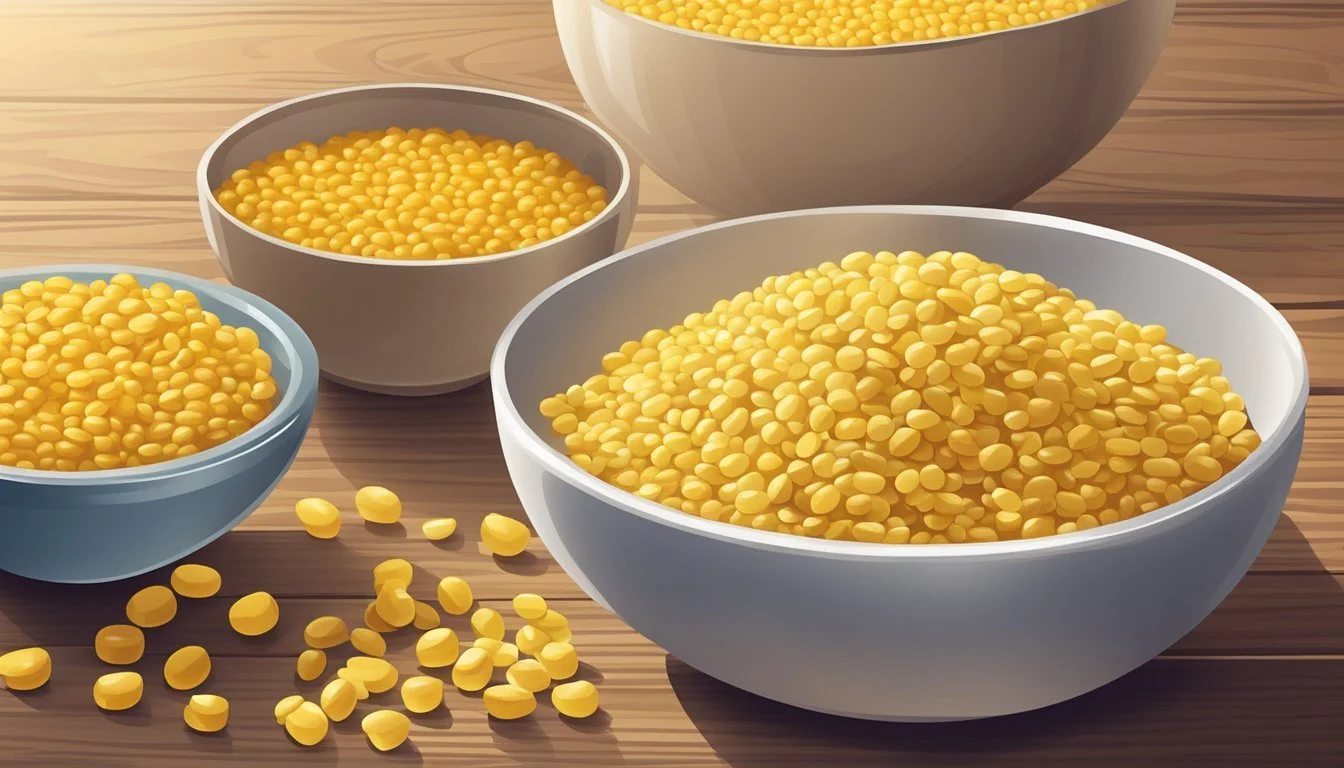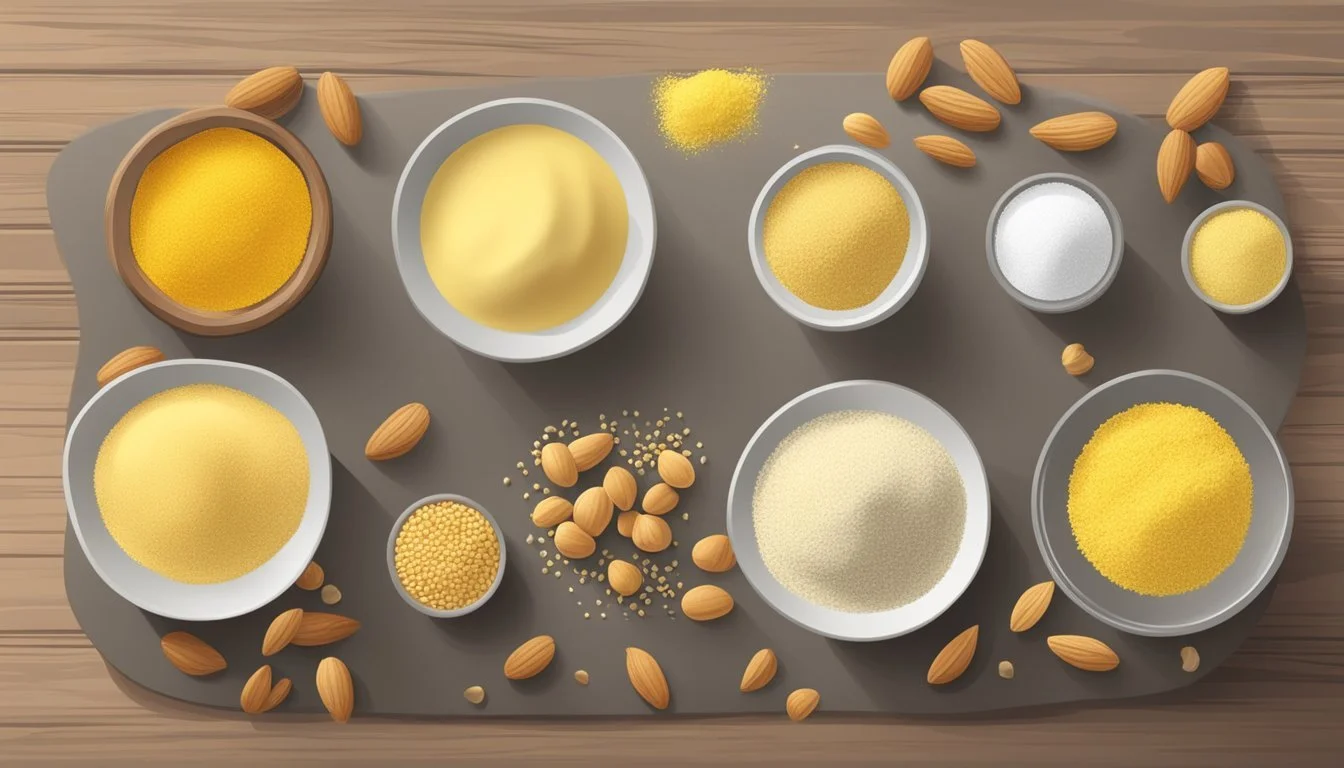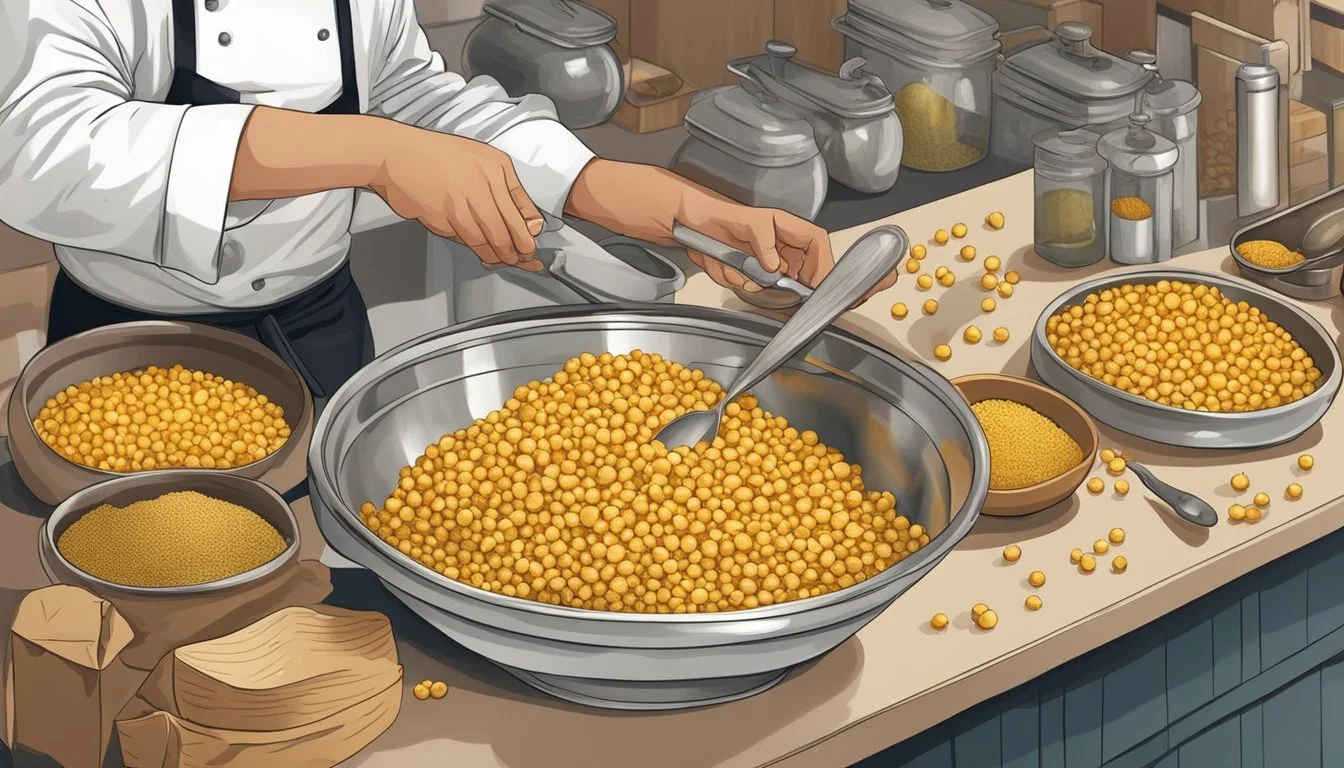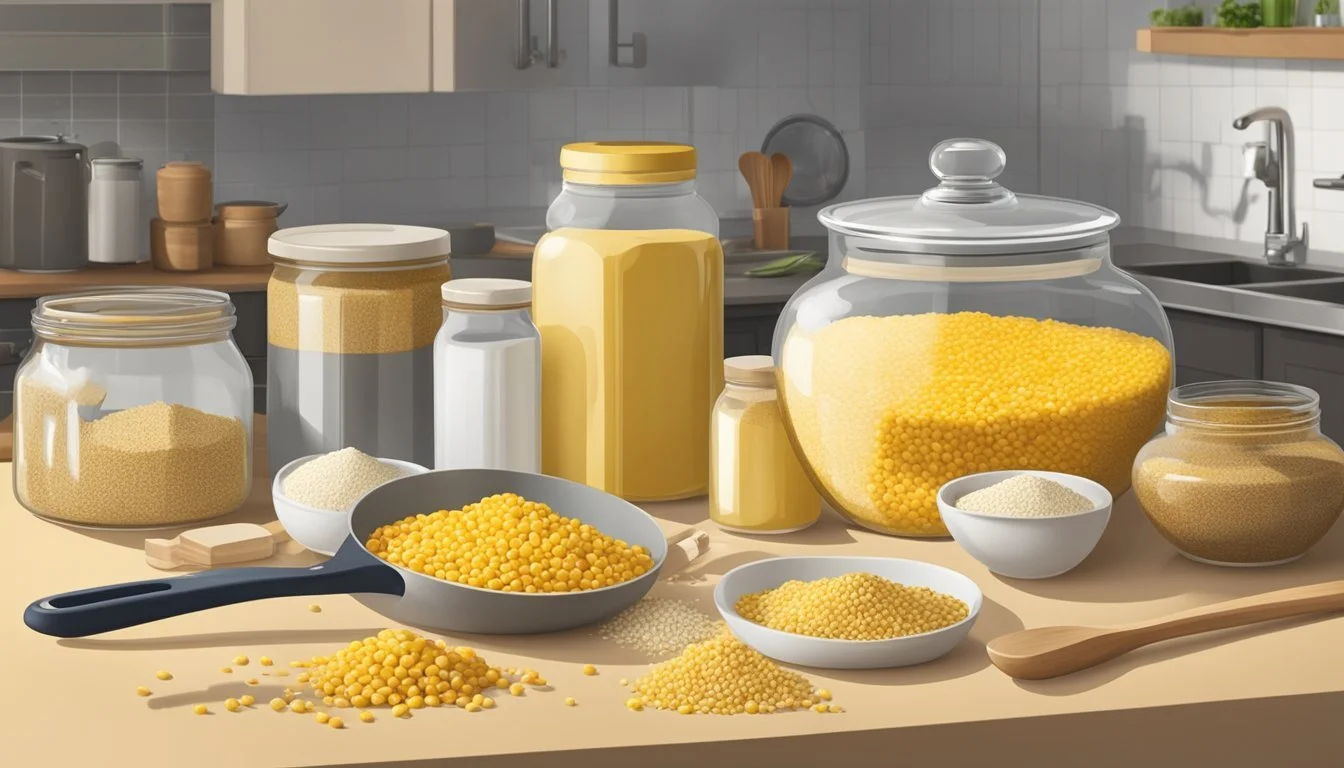Yellow Gram Substitutes
Best Alternatives for Cooking and Nutrition
Finding suitable substitutes for yellow gram, also known as mung dal or moong dal, can be essential when dietary restrictions or availability issues arise. Chickpeas are an excellent alternative, offering a similar protein-rich and nutritious profile. They provide a versatile base for various dishes, ranging from soups to salads, much like yellow gram.
For those seeking a different texture and flavor, lentils, particularly yellow split peas, serve as another fantastic substitute. They share a comparable nutritional makeup, ensuring that dishes remain healthy and balanced. Additionally, adzuki beans can stand in as a substitute with their slightly sweet taste, bringing a unique twist to traditional recipes that call for yellow gram.
Each of these alternatives maintains the essential qualities of yellow gram, providing a protein-rich and nutritious option for your meals. Whether driven by dietary needs or availability, these substitutes ensure that you never miss out on the benefits of yellow gram in your cooking.
Understanding Yellow Gram
Yellow gram, also known as yellow split peas, is a legume highly valued for its rich protein and fiber content. It plays a significant role in various culinary traditions and is packed with essential vitamins and minerals.
Nutritional Profile
Yellow gram is a nutrient-rich legume. High in protein, it provides around 22 grams per 100 grams serving, making it an excellent protein source for vegetarians and vegans.
The fiber content is impressive, aiding digestion and helping maintain healthy blood sugar levels. Key vitamins and minerals found in yellow gram include iron, magnesium, folate, potassium, and calcium.
Additionally, it has a moderate amount of complex carbohydrates and low-fat content, making it a healthy option for balanced diets.
Culinary Uses
Yellow gram's versatility makes it a staple in many recipes. In Indian cuisine, it is often used in dal, a popular lentil soup. It also finds its place in soups, stews, and curries across various culinary traditions including Pakistani and Bangladeshi cuisines.
Yellow gram can be used as a base for soups, providing a creamy texture and rich flavor. It is also employed in baking to make bread, cakes, and even snacks. When cooked, it holds its shape well, which makes it a good addition to salads and grain bowls.
Cultural Significance
Yellow gram holds cultural importance, especially in Indian and Southeast Asian cuisines. It is a common ingredient in traditional dishes served during festivals and celebrations.
In Indian culture, dal made from yellow gram is a comfort food often associated with home cooking. This legume is not only a food item but also a symbol of nourishment and sustenance in many communities.
Its role extends to Pakistani and Bangladeshi cuisines, where it's used in various traditional recipes, showcasing the legume's widespread cultural and culinary significance.
Choosing Substitutes
When choosing substitutes for yellow gram flour, it is critical to consider both the flavor profile and the functional properties of the alternatives. The following sections outline important criteria for selecting substitutes and provide a detailed overview of popular alternatives.
Criteria for Substitution
Selecting an appropriate substitute starts with assessing taste and texture. Yellow gram flour, known for its nutty flavor, should be matched with substitutes that either complement or closely mimic this profile.
Consistency and cooking properties are also key. The substitute should behave similarly when mixed with other ingredients, ensuring consistent textures in recipes.
Nutritional content is another consideration. Many people choose yellow gram flour for its high protein and fiber content, so alternatives like quinoa flour or amaranth flour that are rich in these nutrients may be preferable.
Popular Alternatives
Chickpea Flour: Often used as a direct substitute due to its similar nutty flavor and fine texture. Ideal for both baking and batters.
Almond Flour: Provides a slightly sweet taste and a finer texture. It is suitable for baked goods and offers a low-carb, gluten-free option.
Quinoa Flour: High in protein and holds up well in recipes that call for a dense texture. Works well in a variety of dishes from breads to pancakes.
Millet Flour: Offers a mild, slightly sweet flavor and works well as a gram flour substitute in baked goods.
Mung Bean Flour: Maintains a similar nutty flavor and is an excellent choice for those looking for a protein-packed alternative. It works particularly well in savory dishes.
Whole Wheat Flour: While not gluten-free, this option offers a hearty texture and is rich in fiber, making it a good substitute for certain types of recipes.
Each of these substitutes has unique properties, so it is essential to consider the specifics of the recipe before choosing an alternative.
Legume-Based Substitutes
For those seeking alternatives to yellow gram, there are several legume-based substitutes that provide similar nutritional benefits and culinary versatility.
Chickpeas and Chickpea Flour
Chickpeas, also known as garbanzo beans, are an excellent substitute for yellow gram. They are high in protein and iron, making them a nutritious alternative. Chickpeas can be used whole in salads or cooked dishes for their nutty taste and firm texture. Chickpea flour (besan) is a gluten-free option, rich in fiber and used in various recipes like fritters and flatbreads. This flour provides a similar consistency to yellow gram flour and is a staple in many cuisines.
Lentils and Lentil Flour
Lentils are another versatile option available in various types such as green, red, brown, and yellow. They cook relatively quickly and offer a robust nutritional profile, including high protein content and dietary fiber. Lentil flour can be used as a direct substitute for yellow gram flour in recipes requiring a smooth texture. Its earthy flavor complements many dishes, from soups to baked goods, and it works well in gluten-free diets.
Other Legumes
Other legumes that can replace yellow gram include split peas, mung beans, and black beans. Split peas share a similar cooking time and texture, making them ideal for stews and soups. Mung beans are known for their sweet flavor and soft texture when cooked, suitable for curries and salads. Black beans, though different in color, offer a comparable protein and fiber content, useful in dips and mixed dishes.
Sprouted Alternatives
Sprouted legumes such as mung beans and lentils offer enhanced nutritional benefits. Sprouting increases the availability of nutrients like fiber and protein, making them easier to digest. Sprouted mung beans can be added to salads for a crunchy texture and fresh flavor. Sprouted lentils also work well in various dishes, providing a mildly sweet taste and additional nutrients. These sprouted options are particularly beneficial for those looking to maximize the health benefits of their meals.
Each of these legume-based substitutes offers unique flavors and nutritional profiles while providing similar benefits to yellow gram. Experimenting with these options can add variety and richness to various culinary creations.
Grain-Based Substitutes
Grain-based substitutes offer a wealth of options, each bringing its own unique qualities. These alternatives can be differentiated by factors like protein content, taste, and their effect on recipes.
Quinoa and Quinoa Flour
Quinoa is a protein-rich seed often classified with grains due to similar cooking and usage methods. The seeds have a high nutritional value, being rich in proteins and fiber. Quinoa flour, created by grinding quinoa seeds, retains these benefits.
Key Points:
Protein-Rich: Quinoa has more protein than many traditional grains.
Nutritious: It provides important nutrients like magnesium.
Uses: Suitable for baking, quinoa flour works well in pancakes and bread.
Whole Grains
Whole grains, including whole wheat flour, oat flour, buckwheat flour, and millet flour, are popular substitutes. These grains are rich in fiber and essential nutrients.
Key Points:
Whole Wheat Flour: High in protein and fibers, suitable for most baking needs.
Oat Flour: Gluten-free and adds moisture to baked goods.
Buckwheat Flour: Another gluten-free option, good for its nutty flavor.
Millet Flour: Often used for its mild flavor and smooth texture.
Rice and Rice Flour
Rice, particularly in the form of rice flour, is a common gluten-free substitute. It's especially prevalent in Asian cuisine as both a staple and a thickening agent.
Key Points:
Gluten-Free: Ideal for those with gluten intolerance.
Thickening Agent: Effective in soups and sauces.
Versatility: Can be used in desserts, noodles, and baked goods.
Nut and Seed Flours
Nut and seed flours offer excellent alternatives for those seeking gluten-free, protein-rich substitutions in baking. These flours are often high in protein and other nutrients, making them a valuable addition to various recipes.
Almond Flour
Almond flour is a popular gluten-free option known for its fine texture and mild taste. Made from finely ground blanched almonds, this flour is rich in protein and has a good amount of healthy fats and magnesium.
It contributes a slight nutty taste to baked goods and is well-suited for cookies, cakes, and bread. In recipes, almond flour can generally be used at a 1:1 ratio to replace wheat flour, though it may require additional binding agents due to its lack of starch. Almond flour is also a lower carb option, making it popular in keto and low-carb diets.
Other Seed Flours
Seed flours like sunflower seed flour and pumpkin seed flour provide excellent nutritional benefits and unique flavors. Sunflower seed flour offers a deep flavor with subtle sweetness, making it an effective substitute for almond flour. It's also a protein-rich and nut-free alternative that's great for those with nut allergies.
Pumpkin seed flour has a distinct greenish hue and a rich flavor. Additionally, it offers high protein content and essential nutrients like iron and zinc. Both sunflower and pumpkin seed flours can typically be substituted for almond flour on a 1:1 basis in most recipes.
Another notable mention is quinoa flour, which is both gluten-free and a complete protein, containing all nine essential amino acids. Buckwheat flour, despite its name, is gluten-free and offers a robust, earthy flavor. Both of these seed-based flours provide substantial starch content which can improve the texture and binding in gluten-free baking.
Starchy Substitutes
Starchy substitutes offer diverse options for those seeking alternatives to yellow gram. These substitutes provide unique textures and benefits, such as gluten-free options or specific thickening properties.
Cassava and Tapioca
Cassava is a root vegetable that is processed into both cassava flour and tapioca starch. Cassava flour is gluten-free, making it a good option for those with dietary restrictions. Its neutral taste and versatile consistency make it suitable for baking and thickening sauces.
Tapioca starch, derived from cassava, provides excellent thickening properties. It works well in soups, sauces, and gravies. Additionally, tapioca starch adds a chewy texture to baked goods, which is ideal for recipes like breads and pastries.
Corn Flour and Starches
Corn flour and cornstarch are common and widely available substitutes. Corn flour can be used in baking to add a unique texture and flavor. It’s gluten-free and works well in recipes requiring a fine consistency.
Cornstarch, on the other hand, is often used as a thickening agent due to its smooth texture. Unlike corn flour, it has a neutral taste and creates a clear, glossy finish when used in sauces and soups. Cornstarch requires higher quantities compared to other starches to achieve similar thickening power.
Potato Starch
Potato starch is another gluten-free option and can be used both in baking and cooking. Derived from potato tubers, it is known for its strong thickening capabilities. When used in soups, sauces, and stews, potato starch provides a smooth and velvety texture.
Its neutral taste ensures it doesn’t alter the flavor profile of the dish. Additionally, it is stable at high temperatures, making it ideal for recipes that require prolonged cooking or baking. Use potato starch especially in recipes where a transparent finish is desirable.
Gluten-Free Baking
In gluten-free baking, choosing the right flour blends and understanding specific baking considerations are essential for achieving the desired textures and flavors in your baked goods.
Flour Blends
Gluten-free baking relies on a variety of flour blends to replace traditional wheat flour. Some common gluten-free flours include buckwheat, chestnut, quinoa, corn, and oat flour. Each of these flours brings unique properties to baked goods like cakes, muffins, and bread.
Buckwheat flour, despite its name, is gluten-free and lends a slightly nutty flavor and rich texture to bread and pancakes. Corn and oat flours are excellent options for tortillas and waffles, respectively, offering a good balance of fiber and starch. Fiber content helps in achieving the right consistency and improves the nutritional profile of gluten-free products.
Often, a single type of flour is not enough to mimic the properties of wheat flour. Therefore, it is common to use blends that may include a mixture of rice flour, tapioca starch, and potato starch. These blends help in mimicking the binding and elasticity provided by gluten in traditional baking.
Baking Considerations
When baking gluten-free, certain modifications need to be made to achieve the best results. One important aspect is the use of gluten-replacers such as xanthan gum, guar gum, or ground seeds like psyllium, flax, and chia. These ingredients help provide structure and elasticity, which are typically provided by gluten.
For recipes like pizza dough and bread, which require a chewy texture, adding xanthan gum or ground flax seeds can significantly improve the final product. Additionally, gluten-free batters often require more water to reach the right consistency, especially for recipes like cakes and muffins.
Another key consideration is mixing techniques. Unlike traditional baking, where overmixing can be detrimental, gluten-free batters benefit from vigorous mixing. This helps in incorporating air and distributing moisture evenly, leading to better texture in products like waffles and pancakes.
By understanding these flour blends and baking considerations, one can create a wide range of successful gluten-free baked goods.
Using Substitutes in Cooking
Using substitutes for yellow gram in cooking can be highly effective without compromising the taste or texture of the dish. Different substitutes perform well in various applications like soups, sauces, fried foods, and salads.
Adjustments for Soups and Sauces
In soups, curries, and sauces, substitutes for yellow gram need to mimic the consistency and starch characteristics. Lentils, particularly red or yellow lentils, can be used due to their similar cooking properties and the ability to blend seamlessly into the dish.
Lentils:
Consistency: Soft, mushy
Properties: Starch; thickening agent
Alternatively, split peas can serve as a replacement. They require slightly longer cooking times but achieve a similar creamy texture.
Consistency: Creamy when cooked
Properties: Good for thickening
Both options maintain the vegetarian and vegan aspect and provide necessary nutrients like fiber and protein.
Alternatives for Fried Foods
For fried foods such as fritters or pakoras, the focus should be on substitutes that retain a crisp texture after frying. Chickpea flour (besan) mixed with other legumes can be an excellent alternative, providing a nutty flavor and maintaining the necessary consistency.
Texture: Crisp
Use: Fritters, pakoras
Rice flour also works well in combination with chickpea flour, offering a lighter texture. This substitute is particularly effective in vegan and gluten-free recipes, ensuring the dish retains its integrity post-frying.
Rice Flour and Chickpea Flour Combo:
Texture: Light, crisp
Properties: Gluten-free
Substitutes in Salad and Sprouts
When it comes to salads and sprouts, mung beans are a suitable substitute due to their similar size, texture, and ease of sprouting. Mung beans are nutrient-dense and add a crunchy texture to salads, similar to yellow grams.
Nutrients: High in fiber
Texture: Crunchy
Other alternatives include green gram or chickpeas. Green gram is particularly advantageous for its ease of sprouting and nutrient content, while chickpeas, when lightly cooked, add a hearty texture that enhances the salad's overall profile.
Green Gram and Chickpeas:
Nutrients: Fiber, protein
Texture: Tender yet firm
Using these substitutes ensures that the essential qualities of yellow gram in culinary applications are preserved while diversifying the nutrient intake.
Additional Considerations
When choosing substitutes for yellow gram, it is essential to consider dietary restrictions and the availability of various alternatives in your region.
Dietary Restrictions
Many individuals require gluten-free or vegan options. Chickpea flour is a popular substitute as it is both gluten-free and vegan. It can also be made at home using a food processor or blender with dried chickpeas, which adds convenience.
Rice flour is another excellent option. It is neutral in flavor and free from gluten and nuts. For those with nut allergies, this can be a particularly safe choice. Millet flour falls into the same category, providing a gluten-free solution and can also be found as whole grain for additional nutritional benefits.
Cassava flour offers another gluten-free and vegan alternative. It is rich in vitamins and minerals and free from nuts and grains. Individuals with multiple food sensitivities might find this to be the best option.
Substitute Availability
Different regions may have better availability of certain substitutes. Chickpea flour is widely available in most grocery stores and online, making it a convenient choice.
Rice flour can often be found in both general and specialty grocery stores, particularly those that cater to gluten-free diets. Millet flour is less common, but it can usually be sourced from health food stores or online retailers.
Cassava flour might be found in health food stores and places that specialize in gluten-free products. Its growing popularity means it is becoming more readily available.
Local availability can greatly influence the ease of using these substitutes, so checking your local stores or online options is advisable.



